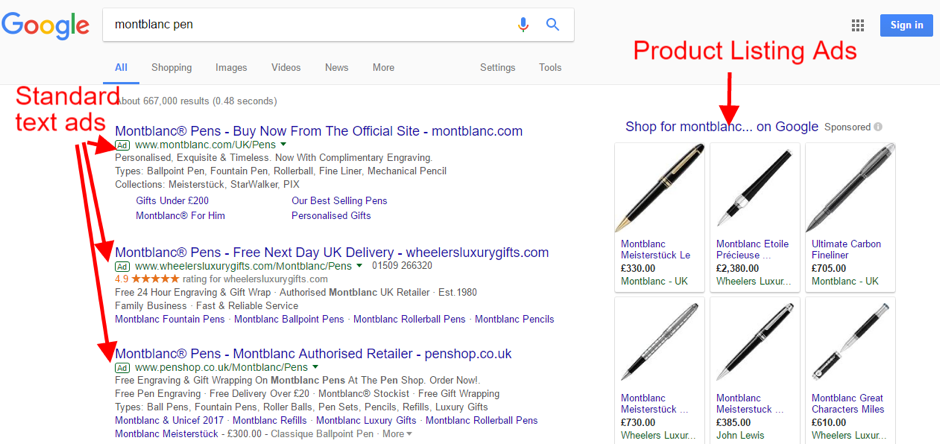When it comes to advertising on Google, businesses often face the decision between Product Listing Ads (PLAs) and traditional Google Ads. While both formats aim to drive traffic and increase sales, they function differently in terms of format, targeting, and optimization. Understanding these differences is key to maximizing your Google Ads strategy and boosting conversions.
1. Ad Format: Visual vs. Text-Based
One of the biggest differences between PLAs and traditional Google Ads is how they appear in search results.
- Product Listing Ads (PLAs): These are image-based ads that display product pictures, prices, and store names directly in Google Shopping results. They are visually engaging and attract high-intent buyers.
- Traditional Google Ads: These are text-based ads that appear on Google Search and partner websites. They include a headline, description, and URL but no product images.
Since PLAs feature high-quality product images, they often receive higher click-through rates (CTR) than traditional Google Ads.
👉 Want to improve your Google Shopping campaigns? Learn more about our Google Ads services.

2. Placement on Google’s Search Results
Both ad types appear on Google, but their placement varies:
- PLAs appear at the top of Google Shopping results, in a carousel format above text ads. They may also appear in the Google Search results under the “Shopping” tab.
- Traditional Google Ads appear in Google’s search results (above or below organic listings) and in the Google Display Network (GDN), which includes YouTube, Gmail, and third-party websites.
Because PLAs get prime placement in Google Shopping, they tend to attract users actively searching for products to buy.
3. Targeting & Keywords
Traditional Google Ads use keyword-based targeting, where advertisers bid on specific search terms. PLAs, however, do not require manual keyword selection.
- PLAs use product feed data, such as titles, descriptions, and categories, to determine ad placement. Google automatically matches search queries with products.
- Traditional Google Ads require advertisers to choose specific keywords and create ad copy tailored to those searches.
👉 Need help optimizing your Google Shopping feed? Check out our SEO optimization services to improve product visibility.
4. Cost & Bidding Strategy
The bidding system differs between PLAs and traditional Google Ads:
- PLAs use cost-per-click (CPC) or Smart Bidding strategies, allowing advertisers to set bids based on product categories, price, or conversion data.
- Traditional Google Ads offer more flexible bidding options, including CPC, cost-per-thousand-impressions (CPM), and cost-per-acquisition (CPA).
Since PLAs are highly targeted toward buyers, they often have higher conversion rates but may also have higher competition in bidding.
5. Performance & Conversion Rates
Because PLAs are visually rich and show product prices upfront, they typically attract users closer to the buying stage. This leads to:
✅ Higher CTR due to engaging visuals
✅ Better conversion rates since users see price & product details before clicking
✅ More qualified traffic with lower bounce rates
On the other hand, traditional Google Ads work well for service-based businesses, lead generation, and general brand awareness campaigns.
Which One Should You Choose?
If you’re selling physical products, PLAs are a must-have in your Google Shopping strategy. However, if you’re promoting services, informational content, or broader brand campaigns, traditional Google Ads might be the better choice.
Want to maximize your Google Ads ROI? Our team at Social Media Max can help you set up high-performing ad campaigns that drive real results.
📞 Call us at 0161 399 3517 or email Syed_66@hotmail.com for expert Google Ads management. Visit Social Media Max to learn more.